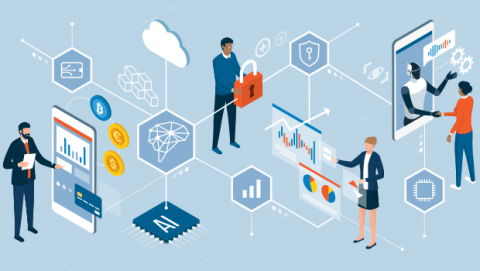Cyberattackers Double Down on Bypassing MFA

MFA flooding, where an attacker will repeatedly attempt to log in using stolen
credentials to create a deluge of push notifications, aims at taking advantage
of users' fatigue for security warnings. "Push notifications are a step up from
SMS, but are susceptible to MFA flooding and MFA fatigue attacks, bombarding the
victim with notifications in the hope they will click 'Allow' on one of them,"
Caulfield says. Another popular tactic — the account reset attack — aims to fool
tech support into giving attackers control of a targeted account, an approach
that led to the successful compromise of the developer Slack channel for
Take-Two Interactive's Rockstar Games, the maker of the Grand Theft Auto
franchise. "An attacker will compromise a user’s credentials, and then pose as a
vendor or IT employee and ask the user for a verification code or to approve an
MFA prompt on their phone," says Jordan LaRose, practice director for
infrastructure security at NCC Group. "Attackers will often use the information
they’ve already compromised as part of the social engineering attack to lull
users into a false sense of security."
Three Trends That Could Impact Data Management In 2023

Like cybercrime, the digitization of the customer experience is almost as old as
the computer itself, but it really came into its own in the mobile age. What
some call digitization 1.0 was all about “mobile, simplified design and new
kinds of applications.” Digitization 2.0 homed in on customer demand—“apps
anywhere, anytime, on any interface, and with any method of interaction: voice,
social media, chat, texting, wearables, and even when you are sitting in your
car.” What I’m calling digitization 3.0 here is a doubling down on both 1.0 and
2.0 to make data even more usable and provide unprecedented access to it. I
began this article by highlighting the value of data. I think the companies that
can extract even more value from their data while maintaining its security,
resiliency and privacy will be the ones that not only survive today’s economic
uncertainty but thrive during and after it. The key is contextualizing your data
to make it more useful. This starts with the steps I’ve listed in the preceding
two sections as a foundation.
Best and worst data breach responses highlight the do's and don'ts of IR

When it comes to data breaches, is there a sliding scale? In other words, if a
tiny school district gets hit with a ransomware attack, do we give the IT team a
partial pass because they probably lack the resources and skill level of a more
tech-savvy company? On the other hand, if a company whose entire business model
is based on protecting user passwords gets hacked, do we judge them more
harshly? Which brings us to LastPass, which experienced an embarrassing breach
that was first announced in August 2022 as simply a minor incident confined to
the application development environment. By December that breach had spread to
customer data including company names, end-user names, billing addresses, email
addresses, telephone numbers, and IP addresses. LastPass gets high marks for
transparency. The company continued to issue public updates following the
initial August announcement.
‘Digital twin’ tech is twice as great as the metaverse

A “digital twin” is not an inert model. It’s a personalized, individualized,
dynamically evolving digital or virtual model of a physical system. It’s dynamic
in the sense that everything that happens to the physical system also happens to
the digital twin — repairs, upgrades, damage, aging, etc.Companies are already
using “digital twins” for integration, testing, monitoring, simulation,
predictive maintenance on bridges, buildings, wind farms, aircraft and
factories. But these are still very early days in the “digital twin” realm. ...
A digital twin system has three parts: The physical system, the virtual digital
copy of that physical system and a communications channel linking the two.
Increasingly, this communication is the relaying of sensor data from the
physical system. It’s made from three major technology categories. If you
imagine a Venn diagram of “metaverse” technologies in one circle, “IoT” in a
second circle and “AI” in the third, “digital twin” technology occupies the
overlapping center. Digital twins are different from models or simulations in
that they are far more complex and extensive and change with incoming data from
the physical twin....”
Backup testing: The why, what, when and how

The aim of all testing is to ensure you can recover data. Those recoveries might
be of individual files, volumes, particular datasets – associated with an
application, for example, or even an entire site, or several. So, testing has to
happen at differing levels of granularity to be effective. That means the
differing levels of file, volume, site, and so on, as above. But it also means
by workload and system type, such as archive, database, application, virtual
machine or discrete systems. At the same time, the backup landscape in an
organisation is subject to constant change, as new applications are brought
online, and as the location of data changes. This is more the case than ever
with the use of the cloud, as applications are developed in increasingly rapid
cycles, and by novel methods of deployment such as containers. ... So, it’s
likely that testing will take place at different levels of the organisation on a
schedule that balances practicality with necessity and importance. Meanwhile,
that testing must consider the constantly changing backup landscape.
Considerations for Developing Cybersecurity Awareness Training
Regular, ongoing cybersecurity awareness training is important, and the best
time to start is during the new employee onboarding process. This sets the
correct expectations in terms of what to do and what not to do before a new
employee has access to the enterprise’s information assets or data. ...
Enterprises may consider using classroom-based training (physical, virtual or a
mixture of both) or a learning management system (LMS) to automate the delivery
and tracking of cybersecurity awareness training. There are many online LMS
providers, such as Absorb LMS and SAP Litmos, and they provide useful tools for
creating online courses, quizzes and surveys. After online courses are created,
an enterprise can use the LMS to organize and distribute online courses to its
employees as needed. The LMS can also be used to monitor training progress, view
analytics and allow employees to provide feedback in order for the enterprise to
recalibrate its learning program for maximum impact.
AI and data privacy: protecting information in a new era

First of all, business technology leaders should consider whether they need AI
and whether their problems can't be solved by more conventional methods. There
is nothing worse than the "I want ML/AI solutions in my business, but I don't
know what for yet" approach. To introduce AI you need to consider the entire
architecture that will build, train and deploy models and consider how to
collect and process large amounts of data. This requires assembling a good
team, consisting of people such as data engineers, ML engineers and data
scientists. It’s necessary to process large amounts of data and master many
tools, so it is not as simple as writing a web application in a standard
framework. Tech leaders should also be aware that AI comes with risks. They
will need more and more computing resources to build increasingly
sophisticated AI platforms. They will need to stay constantly abreast of news
from the world of AI where everything changes rapidly, and it may turn out
that in six months a much better solution or model for a particular problem
has already been created.
Think carefully before considering cloud repatriation

It’s particularly difficult for smaller companies to repatriate, simply
because, at their scale, the savings aren’t worth the effort. Why buy real
estate and hardware and pay extra salaries only to save a small amount? By
contrast, very large companies have the scale to repatriate, But do they want
to? “Do Visa, American Express or Goldman Sachs want to be in the IT hardware
business?” asks Sample, rhetorically. “Do they want to try to take a modest
gain by moving far outside their competency?” Switching can also be
complicated when the cost of change isn’t considered part of the calculation.
A marginal run rate savings gained from pulling an application back on-prem
may be offset by the cost of change, which includes disrupting the business
and missing out on opportunities to do other things, such as upgrading the
systems that help generate revenue. A major transition may also cause down
time—sometimes planned and other times unplanned. “A seamless cutover is
rarely possible when you’re moving back to private infrastructure,” says
Sample.
The High Costs of Going Cloud-Native

When it comes to reasons to move to the public cloud, “saving money” has long
since been replaced with “increased agility.” Like the systems vendors they
are in the process of displacing, AWS, Microsoft Azure, and Google Cloud have
figured out how to maximize their customers’ infrastructure spend, with a
little (actually a lot of) help from the unalterable economics of data
gravity. ... Titled “Cloud-Native Development Report: The High Cost of
Ownership,” the white paper tracks the journey of a hypothetical company as it
embarks on a transition to cloud-native computing. ... While many of the
technologies at the core of the cloud-native approach, such as Kubernetes, are
free and open source, there are substantial costs incurred, predominantly
around the infrastructure and the personnel. In particular, the costs of
finding IT practitioners with experience in using and deploying cloud-native
technologies was among the biggest hurdles identified by the report, which you
can read here.
Security automation: 3 priorities for CIOs

To begin with, the CIO has choices to make about the testing approaches that
will be deployed. Automation in AppSec can refer to tools and processes,
ranging from automated vulnerability scanning (dynamic analysis) and static
code analysis to software composition analysis and other types of security
testing. The most advanced approaches can take things a step further by
combining multiple forms of testing – perhaps augmenting DAST with interactive
application security testing (IAST) and software composition analysis (SCA) –
into a single scan for a comprehensive analysis of the organization’s security
risk posture in a single frame. ... Meanwhile, in workflow terms, IT leaders
should use customizable solutions to trigger scans at certain points in the
development pipeline or based on a predefined schedule. This will allow CIOs
and their teams to coordinate scans at specific times or in response to
certain events like deploying new code or detecting a security incident.
Quote for the day:
"If you don't demonstrate leadership
character, your skills and your results will be discounted, if not
dismissed." -- Mark Miller
No comments:
Post a Comment